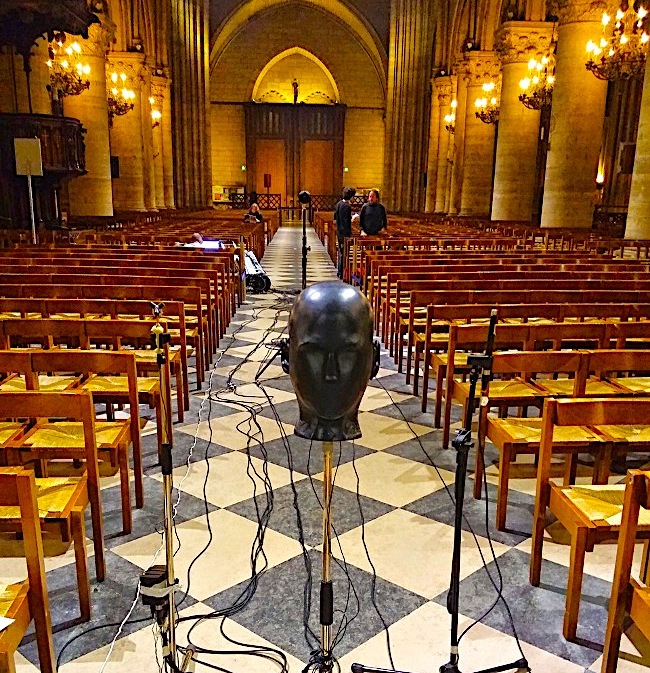- in Production by Bobby Owsinski
- |
- 2 comments
Reconstructing Notre-Dame Cathedral’s Famed Acoustics

The recent Notre-Dame Cathedral fire in Paris was devastating, but work is now well underway for a complete reconstruction. Over a billion Euros have been pledged for the rebuild, and 40 teams of workers under the watchful eyes of 4 lead architects are now on-site. But as fighting over how much to modernize rages on even during construction, much attention is being paid to the famed acoustics of the structure.
Luckily, a full study of the Cathedral’s acoustic imprint was done in 2013 by Brian FG Katz, a Fellow of the Acoustical Society of America and CNRS research director at Sorbonne Université. The hope is that the details from that work will guide construction methods and materials selection in order to restore Notre-Dame to its previous acoustic glory.
The Cathedral has a 6 second reverberation decay time that’s full of mid-frequencies, giving it the signature sound. The impulses were triggered by a 20 second sine wave sweep and supplemented by several balloon airbursts that was recorded by a collection of omnidirectional, ambisonic, and binaural microphones.
Microphones used included 4 DPA model 4006 (1–4) and 1 Schoeps model MK5 omni at a sample rate of 44.1kHz. Another recording chain used a sample rate of 48kHz and and included another 11 omni-directional microphones (6 DPA model 4006, 5 Schoeps model MK5 omnis). The result was 45 digital channels recorded onto a Reaper DAW using RME Fireface 800 and Micstacy interfaces.
A digital aural map of the area was later reconstructed from the data. The measurements only took about an hour, which was advantageous since quiet time in the Cathedral is at a premium.
Since the acoustics depend so much on how the reconstruction goes, it should be interesting to hear how much or little it varies from the original when complete. Although it would be ideal to use exactly the same materials, getting them to sound like they were aged 850 years is the problem. Plus, new building codes might prevent the same or similar materials to be used in some places.
That said, it’s great that there’s such a detailed acoustic map available to give Notre-Dame a chance to be restored to its former sonic glory.

